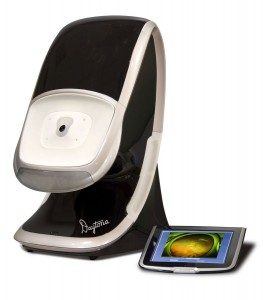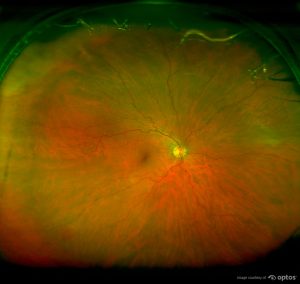
We all want to protect our eyesight and overall health for ourselves and our family – that is why annual eye exams are important. Regular eye care and exams can protect and prevent many eye diseases, if detected early. Today, a whole range of eye problems can be treated successfully without total vision loss.
It makes us proud to be able to provide our patients with the best possible standard of care. Because of this, we now offer the optomap® Retinal Exam. This non-invasive imaging test allows the doctors to see a much more detailed view of the retina than with traditional methods. The image becomes a permanent part of your medical file, allowing the doctors to make important comparisons year after year. In many cases, there will not be a need to dilate after this quick and painless process. If the doctors decide that there is a need for dilation, this will be discussed during your exam.
 The Optomap story: In 1990, 5 year old Leif Anderson went blind in one eye due to an undiagnosed retinal detachment. He was getting regular eye exams, but conventional tests available at the time made a thorough examination difficult. Distressed by the diagnostic methods available, Leif’s father, Douglas, designed the Optomap retinal exam.
The Optomap story: In 1990, 5 year old Leif Anderson went blind in one eye due to an undiagnosed retinal detachment. He was getting regular eye exams, but conventional tests available at the time made a thorough examination difficult. Distressed by the diagnostic methods available, Leif’s father, Douglas, designed the Optomap retinal exam.
Optos’ patented ultra-widefield digital laser scanning technology acquires images that support the detection, diagnosis, analysis, documentation, and management of ocular pathology and systemic disease that may first present in the periphery of the retina (back of eye). These conditions may otherwise go undetected using traditional examination techniques and equipment. Simultaneous, non-contact, central pole-to-periphery views of up to 82% or 200 degrees of the retina (back of eye) are displayed in one single capture, compared to 45 degrees achieved with conventional methods.
EyeCare Associates offers retinal imaging via the latest Optomap technology, the Daytona model. Ask about the Optomap Daytona at your next visit for a simple, convenient, and painless option for your retinal health examination.
These images will help see early signs of many ocular conditions and systemic diseases such as:
AGE RELATED MACULAR DEGENERATION